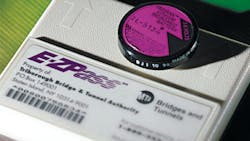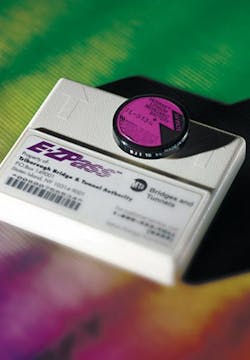Specifying A Primary Lithium Battery
Optimizing a battery for long-term reliability involves the choice of chemistry, the cell design, the quality of the mechanical components, the purity of the raw materials, and the specific manufacturing processes employed. Any shortcut along the way can negatively impact battery service life (see "Power Your Wireless Sensors For 40 Years").
Selecting the optimal power management solution begins with a battery comparison matrix that accounts for various application-specific parameters, including desired voltage, size and weight, expected service life, required temperature range, and cost. Special requirements also need to be considered, including high current pulses, high discharge rate, and minimum equipment shut-off voltage.
Challenging environmental requirements may also be factors. For example, many automatic meter reading (AMR) and advanced metering infrastructure (AMI) meters are designed for use in underground pits, and they should be encased in acrylic to help protect them from corrosion. Available board real estate and circuits assembly criteria also need to be considered. For instance, lithium-thionyl-chloride (LiSOCl2)cells come in a wide variety of sizes and configurations, with through-hole soldering leads or with wire harnesses.
From a practical standpoint, it is essential to determine whether an LiSOCl2 battery is indeed necessary. For example, if the sensor is easily accessible and replaceable or located near hard-wired ac power, a relatively inexpensive alkaline or rechargeable lithium battery may suffice.
If the application requires long life, low self-discharge, and a wide temperature range, then LiSOCl2 chemistry is unsurpassed. A common example is the EZ-Pass electronic toll tag, an RFID application that is commonly exposed to extreme heat, vibration, and rapid temperature cycling, yet demands highly reliable long-term maintenance-free performance (see the figure). For this particular application, LiSOCl2 chemistry is the sole choice. LiSOCl2 chemistry is also well suited for challenging applications, such as medical RFID tags that must withstand the prolonged heat autoclave sterilization, and data loggers that must operate continuously in the cold chain at –80°C.
EZ-Pass electronic toll tags are subject to extreme heat, vibration, and rapid temperature cycling while demanding highly reliable, long-term maintenance-free performance. LiSOCl2 batteries can meet these specifications.
When specifying an LiSOCl2 battery, be mindful that competing batteries using the exact same chemistry can exhibit very different self-discharge rates, which are largely governed by the chemical composition of the electrolyte. If the electrolyte is made from inferior materials with high levels of impurities, it could result in a higher self-discharge rate as well as greater impedance. An experienced battery manufacturer knows how to blend special additives into the electrolyte to reduce impedance.
Calculating expected service life based on nominal capacity can be highly misleading since the total volume of active ingredients is limited by the size of the cell. As a result, nominal capacity values typically do not vary substantially between competing brands. Instead of comparing nominal capacity, design engineers should compare the equivalent operating capacity (EOC) of competing brands to determine the estimated service life, considering the battery’s self-discharge rate, its application current profile, and the environmental conditions.
Appearances can be deceiving, so it is also important to review raw material quality, manufacturing systems, and quality control procedures, as any production shortcut could severely impact battery service life.
As part of the vendor evaluation process, be sure to demand customer testimonials along with fully documented and verifiable performance test data, including discharge curves, battery pulses, low-temperature pulses, and repeatability, as well as safety tests for exposure to vibration, puncture, and short circuit.
LiSOCl2 batteries are not created equal. Proper due diligence is required during the vendor evaluation process to ensure that the right battery is powering your wireless sensor, one that can deliver the energy necessary for decades of maintenance-free performance.
Sol Jacobs is the vice president and general manager of Tadiran Batteries. He has more than 25 years of experience in developing solutions for powering remote devices. He holds a BS in engineering and an MBA. Caption

